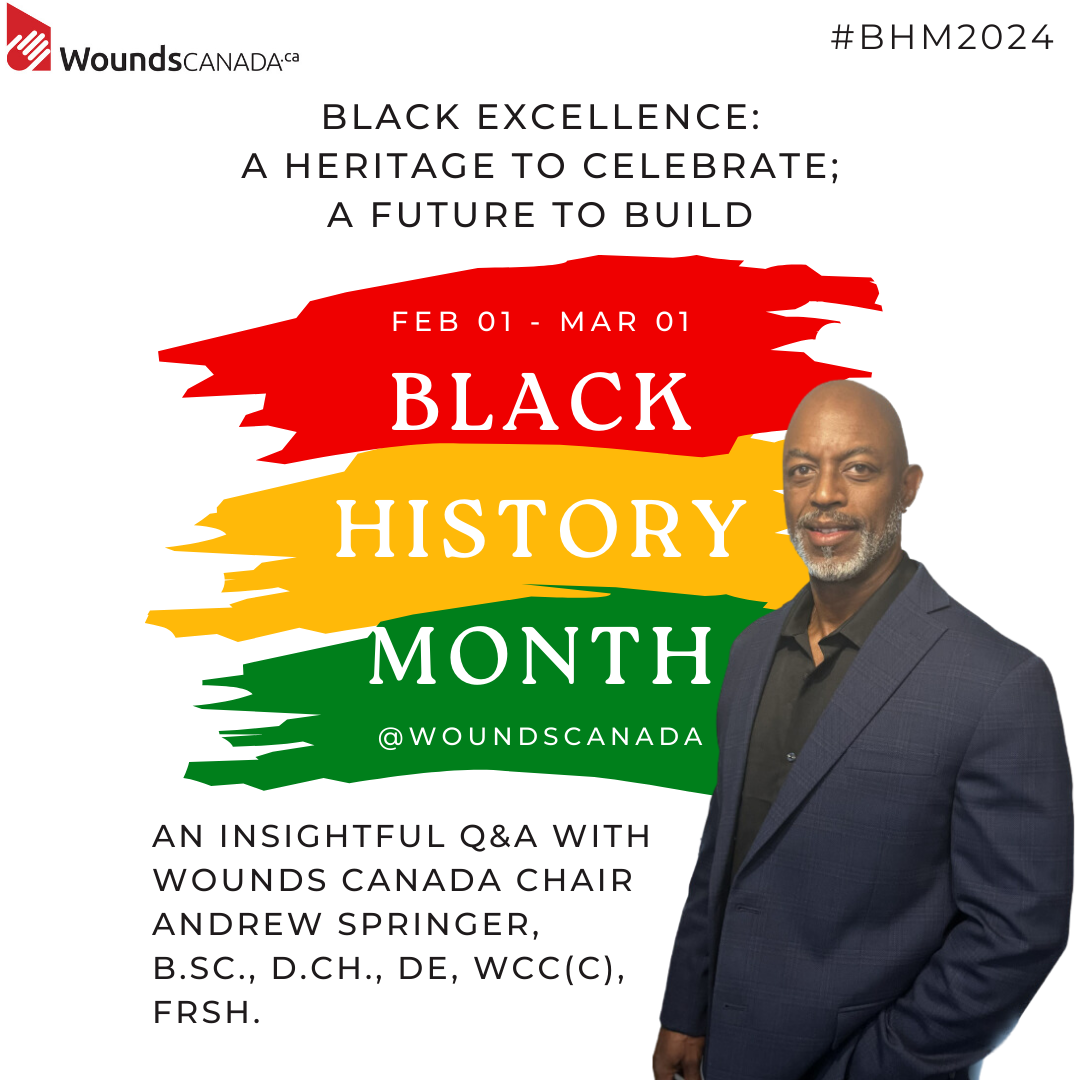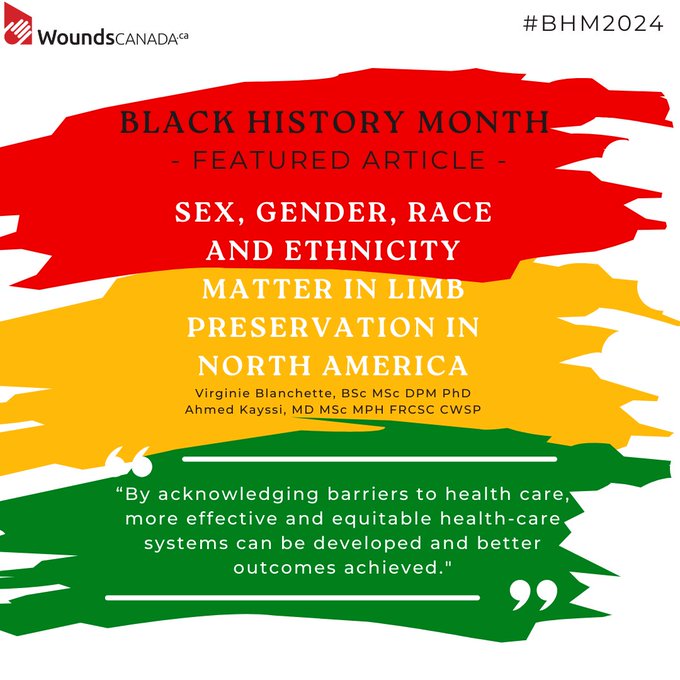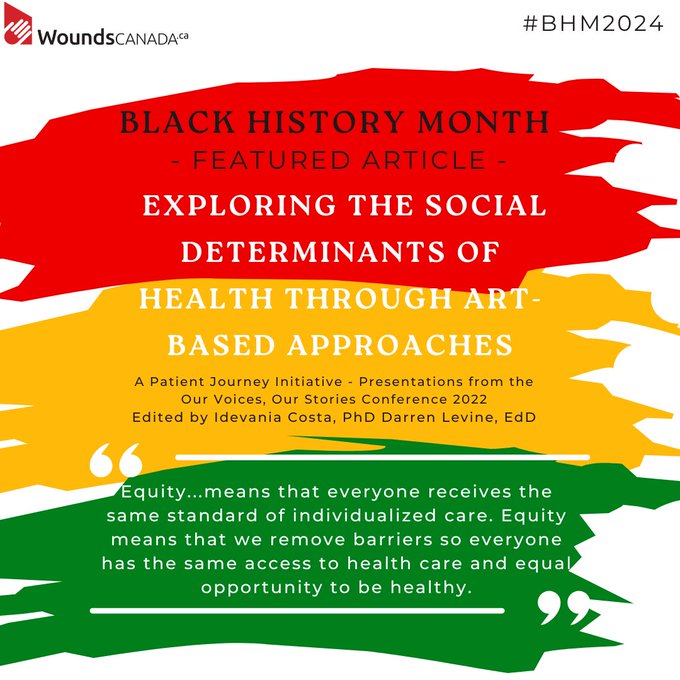Member Feature: Wounds Canada Chair
Andrew Springer B.Sc. D.Ch. DE WCC(c) FRSH - Chair, Wounds Canada, 2023-2025

Andrew Springer has been a practicing chiropodist since 1983 within a variety of public and private practice settings. Andrew possesses a special interest in diabetes and related foot conditions, has a post graduate diploma in Diabetes Education, and is in the final stages of completion of the Ontario Wound Care Champions Program. During his career he has been active in several professional activities requiring leadership, vision, integrity and compassion, including serving as President of the Ontario Society of Chiropodists and the College of Chiropodists of Ontario and in several capacities - clinical, management and administrative - at North York General Hospital, West Park Healthcare and Providence Healthcare.
Andrew is also a member of the Ontario Diabetes Foot Care Task Force, a consultant to the Indigenous Diabetes Health Circle, and has been a Partner in Health for Special Olympics Ontario since 2021. In 2010, Andrew received the recognition of “Outstanding Dedication and Service to the Advancement of the Profession” - Ontario Society of Chiropodists. As past President of the College of Chiropodists of Ontario he was also awarded for his 'Outstanding Commitment and Years of Dedicated Service' and as former Treasurer of the Canadian Association of Foot Professionals he was honoured for his 'Commitment and Efforts to Advance the Professions of Chiropody and Podiatry in Canada.'
Andrew is the current Chair of Wounds Canada and has been a member of the organization since 2013. Andrew is also Wounds Canada’s first BIPOC (Black, Indigenous, and People of Colour) Chair and has served on the Board of Directors for approximately 10 years. During this time, he also participated on the Board of Healthy Feet, a joint program between Wounds Canada and Diabetic Foot Canada, and he served as a contributor for Wound Care Canada magazine and as a returning moderator at the Wounds Canada conference. As Chair of Wounds Canada’s Succession Planning Committee, Andrew played a key role in enhancing the organization’s structure and governance model, developing processes and opportunities via which the Board and Executive Committee can best support the Wounds Canada team and its members.
Q&A
1. In light of Black History Month, how do you see the role of Wounds Canada and similar organizations in promoting diversity, equity and inclusion (DEI) within the health-care sector, especially in skin health and foot care?
Talking about it and putting it at the forefront of practice and care, not only for health-care professional but for patients and caregivers is extremely important. Promoting DEI in the health-care sector is not only about promoting it in the health-care profession but it also includes advancing the awareness of it in patient care as well.
For example, we talk about the importance of early detection in wound care and how it is paramount to avoid more serious complications, but the early signs of a severe wound can appear differently on different colour skin tones. Individuals on all sides of the care spectrum need to be aware of these differences in order to ensure optimal care. Research has also demonstrated that people of colour receive inferior care and have poorer outcomes when it comes to health care. In breast cancer, for example, there seems to be later diagnoses, more aggressive forms of cancer in black women, leading to poorer outcomes and higher mortality. There are indications that this may also be true in the Wound Care world. It is my hope that Wounds Canada and like-minded organizations can promote research to not only shine a light on this inequity but propose and promote viable solutions, as lives are at stake. These trends are concerning and need to be examined, discussed and addressed so that they stop, or are at least diminished.
Individuals and patients also need to be encouraged to be their own best advocate for their care and health related organizations need to support individuals in this by developing tools and resources that best equip them to advocate for themselves. Opportunities and arenas need to be identified and/or created for patient voices to be heard when they feel they are not receiving the best care possible. Why? Because everyone deserves the best possible care.
2. Considering the theme of Black History Month 2024, ‘Black Excellence: A Heritage to Celebrate; Future to Build,’ how do you envision the future of health care in Canada becoming more inclusive and representative of the BIPOC community?
Health care in Canada, like all specialized communities i.e., education, law enforcement etc. reflects Canadian society. Black excellence exists in all these arenas. The issue is whether it is supported, being allowed to thrive, is recognized, and whether achievements are celebrated – not just within the black community, but across the broader Canadian landscape.
In my lifetime I have seen, and experienced, prevalent trends move from blatant animosity and active undermining and inhibition to acceptance of black people in educational programs and in the workplace. It is time that the significant contributions of black professionals in health care are acknowledged. Those difficult conversations about inequities in health care must occur so that we can move forward into a future where professionals can offer their best, and all patients can receive the best care available.
These conversations can sometimes be awkward, but they are essential. These conversations can help illuminate unconscious biases that people do not realize they hold that are impacting their interactions with others. For health care in Canada to become more inclusive we first need to be willing to admit that it is not as inclusive as we would like to think. Then we need to find effective means of addressing existing inequities. Mandatory training in unconscious bias might be a great first step in encouraging these conversations and ensuring the best possible care for all.
Health related organizations can also continue to provide opportunities for research and examination into the difference between practice and care for people of different races and ethnicities. One article that comes to mind touched upon why gender, race and ethnicity matter in wound care, specifically in limb preservation and was authored by my Wounds Canada Board colleagues Virginie Blanchette BSc MSc DPM PhD and Ahmed Kayssi MD MSc MPH FRCSC CWSP. Within this paper, they highlight the concept and need for health equity, “health equity aims to ensure no person is denied the possibility of good health as the result of belonging to a group that has historically been economically or socially disadvantaged.” This article was published in Wounds Canada’s Limb Preservation Journal in 2022 and was a summary of the session they delivered previously at Wounds Canada’s 2021 National Fall Conference the year before. Further exploration, further discussion and action against these issues and disparities needs to be done.
3. As a leader in the health care profession, what strategies do you believe are most effective for mentoring and supporting young Black, Indigenous, and People of Colour (BIPOC) professionals entering the field of skin and foot care?
The reality is there are still many people that choose to focus on the colour of someone’s skin and treat them differently because of it. We need to support and stand up for one another, not only those within the health care profession but those seeking the services of health-care professionals as well. All health-care professionals and patients need to understand and be aware of the barriers that others may encounter and to speak up when they witness or are faced with these barriers themselves. For health-care professionals specifically, business and professional networks within their community or province can be a great way to connect with others, support each other, inform others of what you have witnessed or experienced and strategize together on how to address these issues.
4. How do you balance the importance of acknowledging and celebrating Black history and contributions in health care, while also working towards a future where racial and ethnic diversity is the norm rather than the exception in professional environments?
Racial and ethnic diversity in health care will become the norm only when the systemic and individual barriers are identified, spoken about and addressed. This requires a change in societal attitudes. As much as I have seen incredible movement in my lifetime, there is much still to do. In the interim, the celebration of black history and contributions in health care is a start. It raises awareness and keeps the conversation going. In the meantime, the struggle continues.
1Sex, Gender, Race and Ethnicity Matter in Limb Preservation in North America BSMSDPMPD Virginie Blanchette MDMSMPHFC Ahmed Kayssi, Limb Preservation in Canada 3 (1), 8


